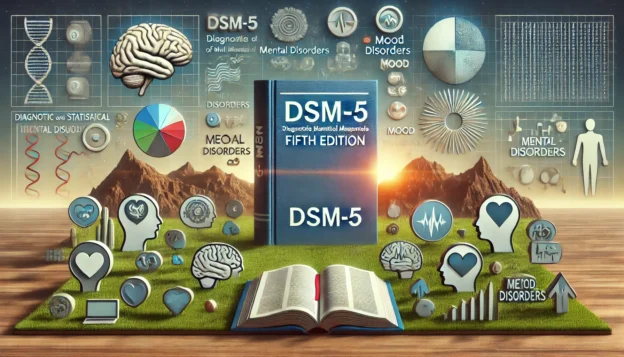The DSM-5, published by the American Psychiatric Association in 2013, is an essential tool for diagnosing mental disorders, reflecting decades of evolving research since its first edition in 1952. The manual is divided into three sections: an introduction, detailed diagnostic criteria across 20 chapters, and emerging measures and models. Despite its utility, the DSM-5 has faced criticism for reducing diagnostic categories, medicalizing normal behaviours, potential pharmaceutical influence, and a lack of transparency in its revision process. Used globally, often alongside the WHO’s ICD, the DSM-5 remains a crucial yet controversial framework in mental health diagnostics.
History and Context
The Diagnostic and Statistical Manual of Mental Disorders, Fifth Edition (DSM-5), is a critical tool for the diagnosis and classification of mental disorders, published by the American Psychiatric Association (APA). The DSM has evolved over several decades, with the first edition released in 1952. Each subsequent edition has incorporated new research and changing perspectives on mental health. The DSM-5, released in May 2013, reflects significant updates from its predecessor, the DSM-IV-TR, which was published in 2000.
DSM-5 Contents
The DSM-5 is structured into three main sections:
- Section I: Introduction and use of the manual, outlining its purpose and structure.
- Section II: Diagnostic criteria and codes, presenting detailed criteria for diagnosing various mental disorders, categorized into 20 chapters, such as Neurodevelopmental Disorders, Schizophrenia Spectrum, and other Psychotic Disorders, Bipolar and Related Disorders, Depressive Disorders, Anxiety Disorders, and more.
- Section III: Emerging measures and models, including assessment measures, cultural formulations, alternative model for personality disorders, and conditions for further study.
DSM-5 Controversies
The DSM-5 has faced several controversies and criticisms:
- Reduction of Diagnostic Categories: Critics argue that combining certain diagnoses, like Asperger’s Syndrome and other autism spectrum disorders, into a single category may overlook important distinctions.
- Medicalization of Normal Behaviors: Concerns have been raised that the DSM-5 pathologizes normal behaviors, potentially leading to overdiagnosis and overtreatment. For example, the inclusion of new disorders like Disruptive Mood Dysregulation Disorder (DMDD) has been contentious.
- Pharmaceutical Influence: There are claims that the DSM-5’s development was influenced by the pharmaceutical industry, potentially biasing the inclusion and criteria of certain disorders.
- Lack of Transparency: Some mental health professionals have criticized the DSM-5 revision process for being insufficiently transparent and inclusive of diverse professional input.
Usage Worldwide
Despite its controversies, the DSM-5 is widely used globally as a primary reference for diagnosing mental disorders. It is utilized by psychiatrists, psychologists, social workers, and other mental health professionals in clinical settings, research, insurance, and legal contexts. While the DSM-5 is primarily used in the United States, many countries use it alongside or in reference to the International Classification of Diseases (ICD) by the World Health Organization (WHO), which provides a global standard for health information and diagnosis.
Conclusion
The DSM-5 is a crucial, yet sometimes controversial, tool in the field of mental health, providing a comprehensive framework for diagnosing mental disorders. Its evolution reflects ongoing changes in the understanding of mental health, but it continues to spark debate regarding its classifications, diagnostic criteria, and influence on clinical practice worldwide.
